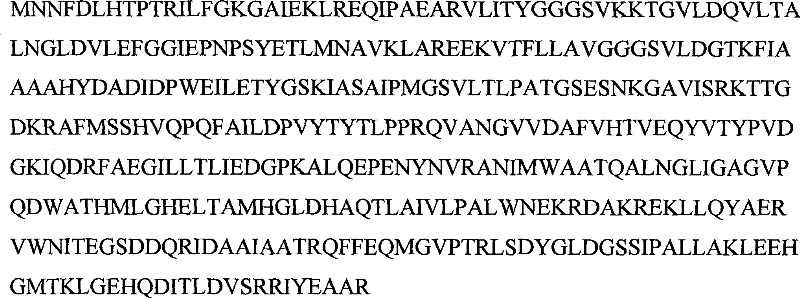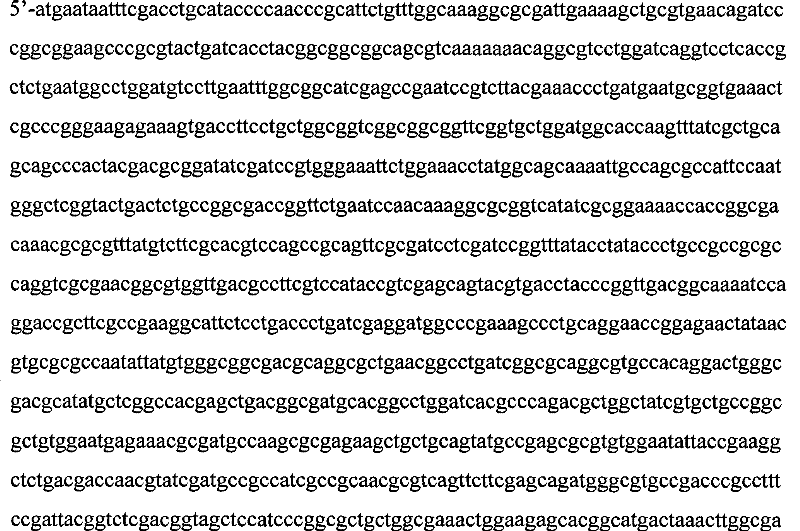Recombinant expression of aldehyde reductase and application thereof in bioconversion of glycerol into 1,3-propylene glycol
A biotransformation and reductase technology, applied in the field of bioengineering, can solve problems such as ineffective utilization, and achieve the effect of increasing yield
- Summary
- Abstract
- Description
- Claims
- Application Information
AI Technical Summary
Problems solved by technology
Method used
Image
Examples
Embodiment
[0024] (1) Cloning of aldehyde reductase gene yqhD:
[0025] Primers were designed according to the aldehyde reductase gene sequence (yqhD, ID: EU012494) of Klebsiella pneumoniae AS1.1736 published in GenBank as follows:
[0026] P1: 5'-ATGAATAATTTCGACCTGCATACCC-3' (SEQ ID NO: 3)
[0027] P2: 5'-TTAGCGTGCAGCCTCGTAAATAC-3' (SEQ ID NO: 4)
[0028] Complete PCR reaction (referring to Sambrook, J ., Russel, D.W., Molecular Cloning: A Laboratory Maunal 3rd ed., Cold Spring Harbor, New York: Cold Spring Harbor Laboratory Press, 2001). Add the following components to the PCR reaction tube: 1 μl of genomic DNA, 4 μl of dNTPs, 1 μl of primers P1 and P2 (synthesized by Treasure Bioengineering (Dalian) Co., Ltd.), 5 μl of 10×Ex Taq buffer, 1U of Ex Taq DNA polymerase, and make up to 50 μl of water; Reaction conditions: Denaturation at 95°C for 60s, 30 cycles at 95°C for 30s, 58°C for 1min, and 72°C for 2min. The obtained PCR product was confirmed by electrophoresis analysis, purified...
PUM
 Login to View More
Login to View More Abstract
Description
Claims
Application Information
 Login to View More
Login to View More - R&D
- Intellectual Property
- Life Sciences
- Materials
- Tech Scout
- Unparalleled Data Quality
- Higher Quality Content
- 60% Fewer Hallucinations
Browse by: Latest US Patents, China's latest patents, Technical Efficacy Thesaurus, Application Domain, Technology Topic, Popular Technical Reports.
© 2025 PatSnap. All rights reserved.Legal|Privacy policy|Modern Slavery Act Transparency Statement|Sitemap|About US| Contact US: help@patsnap.com



